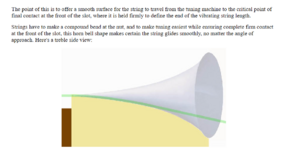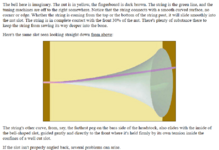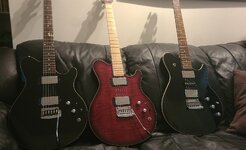dean701
Well-known member
troubleshooting floating bridges can be quite a challenge so I usually deck them to troubleshoot. when decked if there are still issues, I use a fine sharpie and mark the strings at the saddle and nut points on all strings and take pictures/use a magnifying glass. Then go crazy on the bar and see which sharpie marks have relocated. they won't move much so it takes some time to pinpoint. if there are multiple issues it can be very challenging. Hence why I just replace the nuts and the saddles.That is very intriguing. Maybe the next test for my Silo Special. I am with you on the tuning stability but I have never been great at perfectly dialing in trem guitars. I have had a couple that were exceptional but all others were frustrating to the point that now I just deck them with the ability for down only light trem work that keeps me out of trouble.







